Finding wild parrots in my backyard would have sounded insane only a few years ago. However, now I know there is a colony nest of Monk Parakeets only a short drive from where I live.
Still, Central Florida pales in comparison to the diversity of Psittaciformes found in South Florida. Because of the much more tropical climate, weather, and vegetation, southern Florida mirrors the natural ecosystems of these birds well enough that they can thrive much farther north than their native ranges.
Florida boasts 17 species of Psittaciformes (the phylogenetic order which includes parrots, parakeets, macaws, cockatoos, lovebirds, lorikeets, budgerigars, and other relatives). This is an astonishing number, considering there are 21 species of feral parrots in the North American continent, meaning you can find 81% of all wild parrots in Florida!
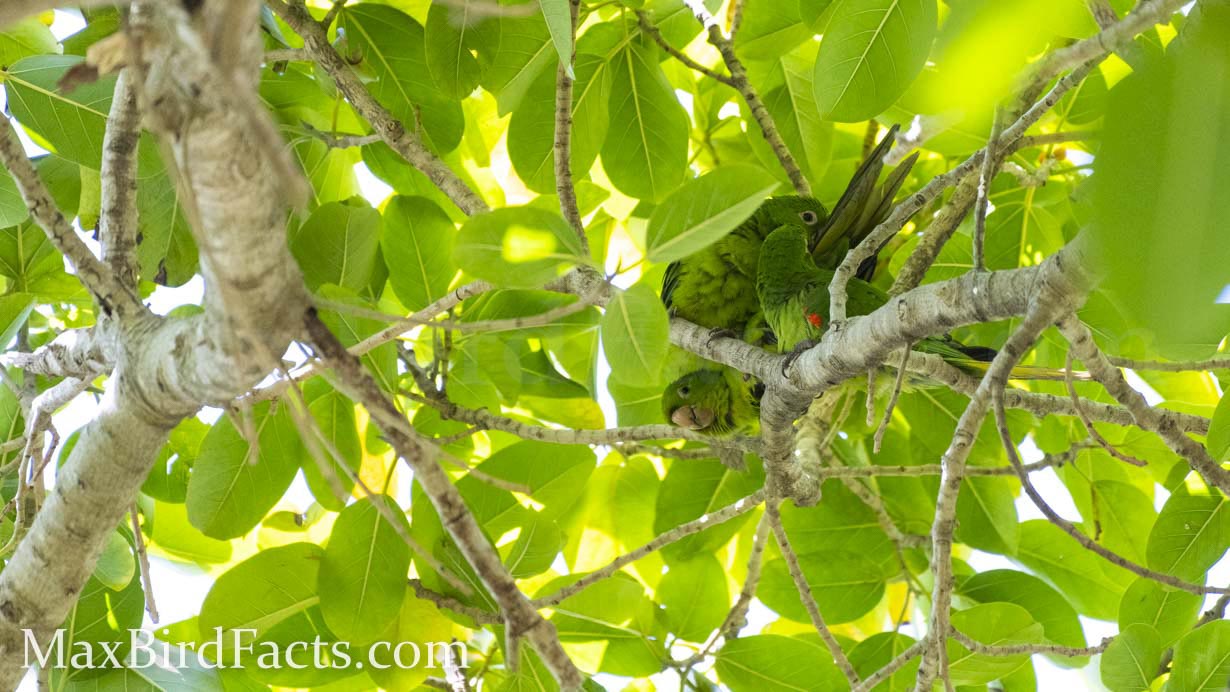
But why are there so many species of parrots flying wild throughout Florida? This multitude comes from a variety of reasons, but I think it can be narrowed down into three simple factors:
- Florida’s weather and climate
- Illegal pet trade
- Parrot’s natural intelligence and adaptability
Why Are There Wild Parrots In Florida?
Florida houses some of the widest arrays of ecosystems in North America. From the pine forests of North Florida to the Everglades and coastal wetlands of South Florida and the savanna-like grasslands of Central Florida, there is an environment for any bird to find comfort.
During a recent trip through Broward, Martin, Miami-Dade, and Palm Beach counties, I witnessed the variety of environments these fantastic birds call home. But this wouldn’t be possible if it weren’t for Florida’s famed climate.
The vast majority of parrot species call the tropical rainforest their natural habitat. From the macaws of the Amazon River to the parakeets in the Andes Mountains, these birds prefer a humid, warm climate with plenty of fruit and thickly canopied trees.
With the nearly non-existent winter temperatures in South Florida, fruit trees abound, and the leaves never seem to fall. Green thumbs throughout the state also aid the parrot’s integration into this region by planting decorative flora from Central and South America. Even the native vegetation of this region is very analogous to the familiar trees of the parrot’s homeland.
Manicured lawns and greens are dappled with massive palms and shaded coniferous groves, which fit each species’ needs differently.
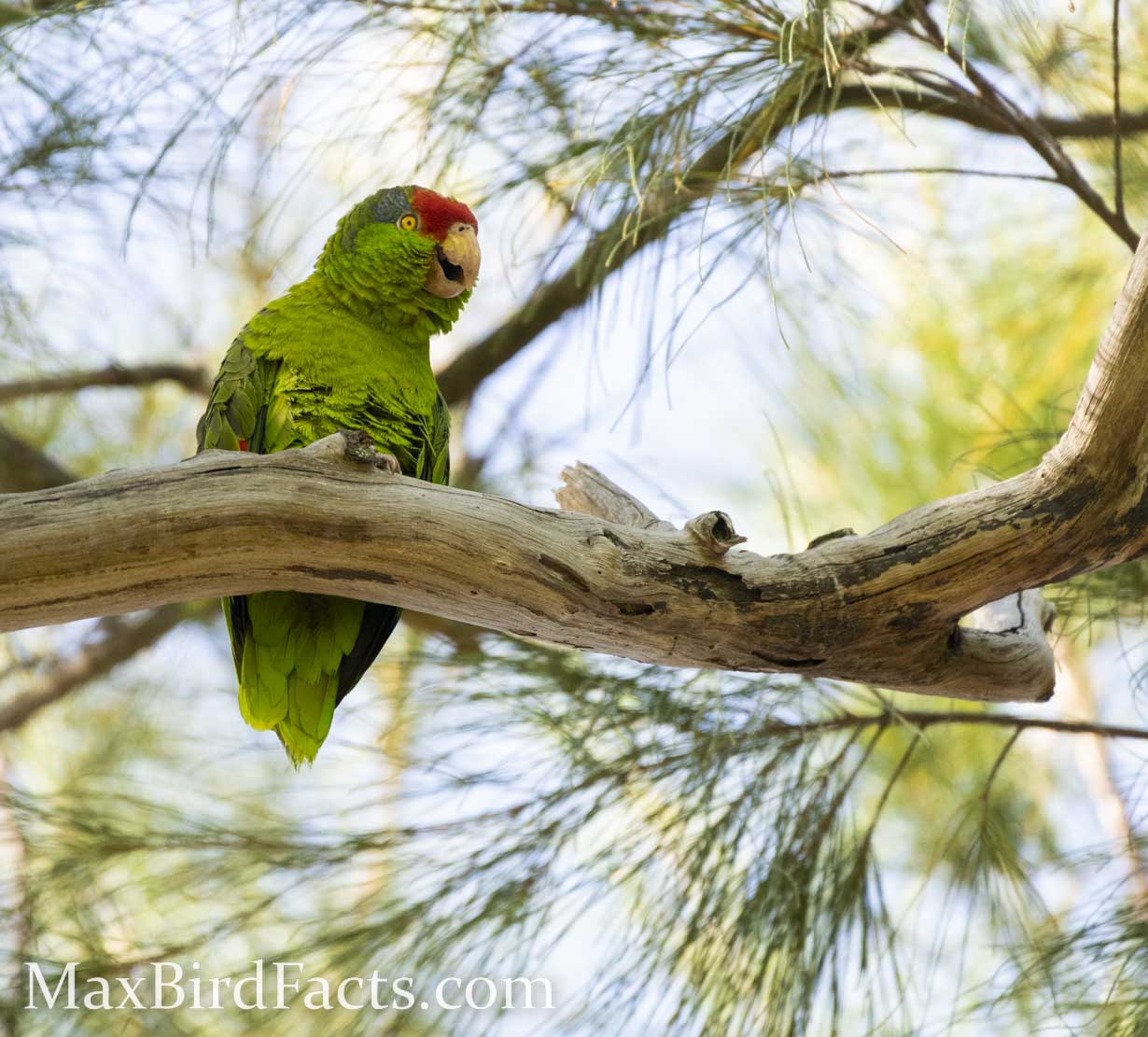
For example, some smaller parakeets prefer the tops of dead palm trees with the open grass for several yards ringing its trunk to spot predators. While other, larger Psittacines prefer tangled branches of hardwood trees and hollows within their sturdy trunks to make their sequestered nests.
This variability in environments and ecosystems but stability in climate and sustenance makes Florida parrot heaven.
But, of course, any one of these factors alone wouldn’t be enough to sustain these vagrants along our native species. Still, our colorful southern neighbors can enjoy the Sunshine State because of our area’s abundance of niches and plentiful food.
The most well-known reason parrots have made it into North America is the pet trade. But unfortunately, much of this is done illegally by trapping the birds in their native habitats and transporting them worldwide to be sold.
A study on Bolivian parrots being sold found that 94% of the over 20,000 birds in pet shops were illegally captured from wild populations. This is not only a massive loss to the wild birds of this area but also shows there is still an evident demand for these feathered gems.
Thankfully, some of these birds manage to escape or are released once they reach their destinations. And some of these birds will thrive, like in the case of the wild parrots in Florida.
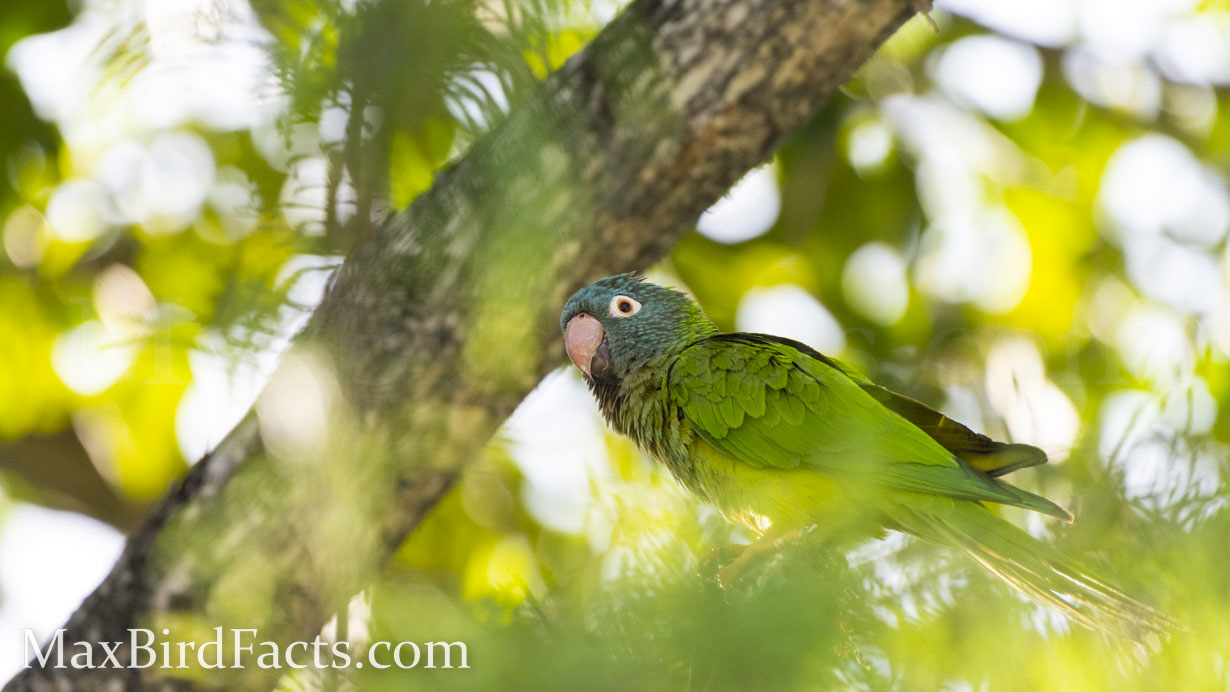
The vast network of the illegal pet trade has scattered species from very isolated pockets of South America to all around the world. This tribulation has a small silver lining, but we’ll get to that in the next section.
The third and perhaps most influential reason there are wild parrots in Florida is their impeccable intelligence and adaptability. It is no secret that parrots are among the most intelligent animals on the planet, arguably more extraordinary than a five-year-old human.
This intelligence comes hand in hand with prickling curiosity and the endeavor to explore. A parrot’s natural curiosity allows them to take advantage of situations many other birds might fail.
The urge to try an unusual fruit or berry could give the bird another food source they won’t compete for. The newness of a rotten-out lair in a lamp post could be the foundation of a new nest site.
Intelligence also leads animals to find new ways to solve old problems. Tool use is one of the most remarkable traits we consider when studying animal behavior. Whether this is a way to portray our own human assertions of intellect to animals or not is another topic of discussion entirely.
Regardless, if the family Corvidae (ravens, crows, jays, and kin) are the kings of avian intelligence, then the order Psittaciformes are the unrivaled queens. Parrots are well known for using sticks to pry apart prized nuts or even just to reach an itch on the back of their head.
The native ranges of parrots caused an evolutionary push for these birds to outsmart their neighbors. The tropical rainforests support a massive abundance of food and territory but also immense numbers of vying, hungry mouths.
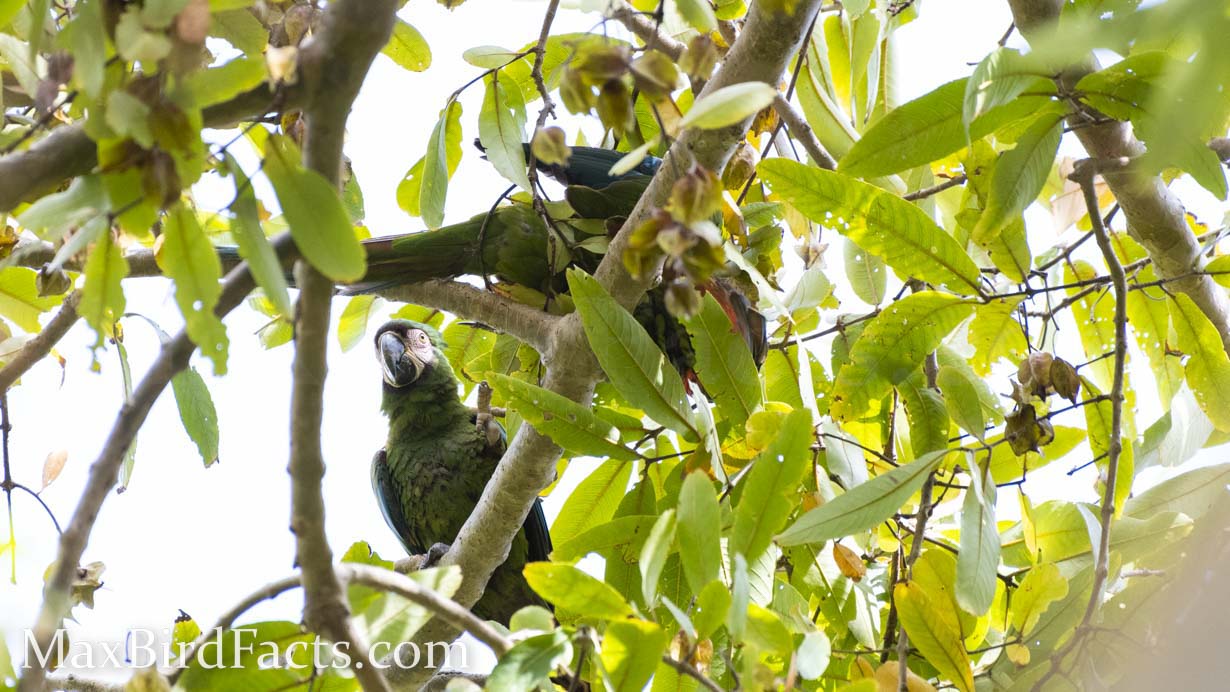
Think of it this way; you are a Chestnut-fronted Macaw (Ara severus) on the riverbanks of the Amazon. Some of the other macaws from your company are squabbling with another flock of macaws over a patch of fruiting squash vines.
Then, looking around, you spot small fruits at the top of an uncontended tree. Flying to this tree, you find these fruits have a tough outer flesh that the smaller parrots can’t seem to get into, hence why they aren’t feeding on them.
With your powerful crushing jaws and dexterous talons, you quickly work through the fruit’s tough exterior and discover a deliciously rich, starchy flesh inside. But, of course, if your curiosity to investigate that mystery fruit was nonexistent, you would also be fighting for the squash scraps.
This is the importance of avian intelligence; birds are seldom satisfied with one answer and constantly push for something more. We will see the importance of this final factor more in the upcoming section and how parrots have utilized their intelligence to take full advantage of man-made landscapes.
How Wild Parrots In Florida Help Their Endangered Wild Populations
Why is it essential that these groups of “feral” parrots are protected? The simple reason is the majority of these birds’ native ranges are heavily threatened.
The coastal Mexican states of Tamaulipas and Veracruz are the last areas where you can find the Red-crowned Parrot’s (Amazona viridigenalis) home territory. This magnificent bird has declined in its native regions since the 1970s.
Yet, the Red-crowned Parrot is one of the most prolific “invasive” parrot species, spreading to California, Colorado, Florida, Hawaii, Illinois, Puerto Rico, and Texas.
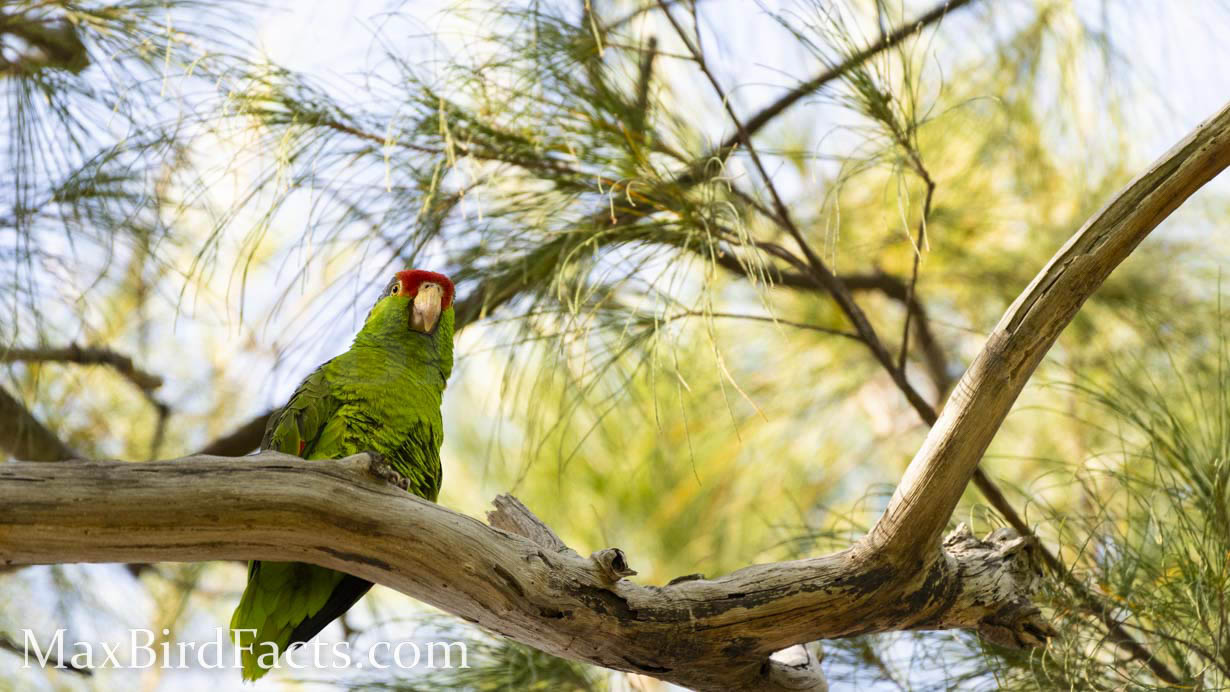
These escaped Amazons now easily outnumber their wild Mexican relatives. Someday, these fugitives might be the key to this bird’s escape from the extinction vortex.
The adaptations these escaped parrots needed to achieve in their new environments could mean new genes are available to the Red-crowned Parrot. However, these genetic differences might not be the best if scientists want to keep a “pure” form of the wild Red-crowned Parrot.
These changes could also allow the Mexican parrot populations to take advantage of their human neighbors better and hopefully start to thrive south of the border. And even if these original Mexican populations dwindle and eventually disappear, the species has made a firm foothold in North America, where it flourishes today.
Monk Parakeets (Myiopsitta monachus) share this same sensational global advance. Native to the South American continent, these parakeets are just as at home in the dense Amazon rainforest as they are on the edges of plantations and towns.
Their ease in adapting to artificial environments made Monk Parakeets a perfect fit for the urban sprawls of Amsterdam, Athens, Barcelona, Boston, Brussels, Chicago, Denver, Dubai, Jerusalem, London, Los Angeles, Miami, New York, Paris, Rome, Seattle, Toronto, and Venice.
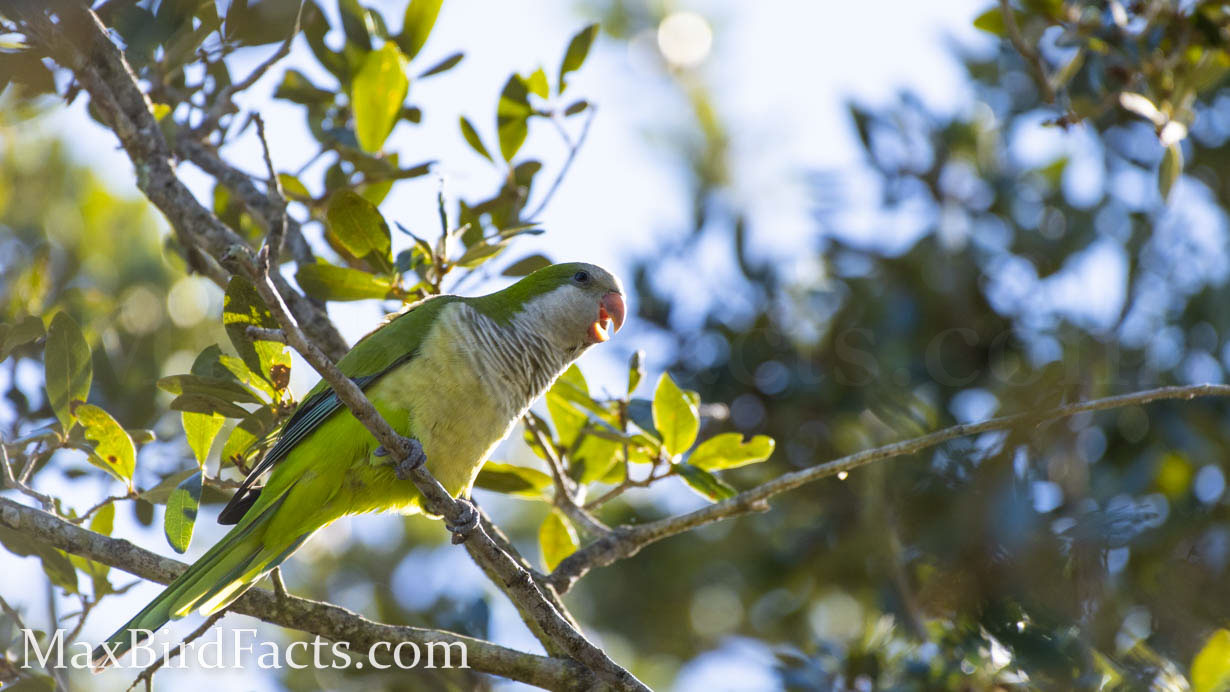
These diminutive parrots are arguably one of the most far-reaching avian species, and again it comes to the Psittaciformes order’s intelligence and adaptability.
Monk Parakeets are one of the few parrots to form communal nests, which is the key to their global spread. These nests are made of massive bundles of sticks and are inhabited by multiple families.
This might seem insignificant, but Monk Parakeets are one of the rare members of the Psittaciformes to build their own nests and not be secondary cavity nesters. Furthermore, these stick nests are very well insulated, allowing these parakeets to survive much farther north than their cousins.
These colonial stick nests also allow for better protection from threats. Instead of a solo pair of parakeets to forage, clean, guard, and maintain the nest, these labors can be shared between multiple birds.
Think of an apartment building with multiple stories in which all the neighbors get along (I know this is a pretty lovely fantasy). If one of the tenants at the bottom levels alerts the rest of the building that a thief is trying to break in, the other tenants will likely come and try to fight off the threat. This is because the tenants at the top levels are at the same risk of danger as those below them, giving them the same reason to want it gone.
These feathery apartments are the key to the Monk Parakeet’s successful spread into cities and continents that no other South American bird has ever been. With their colony of helpful neighbors and well-insulated nests, these birds can survive freezing Midwestern winters and blistering Arabian summers.
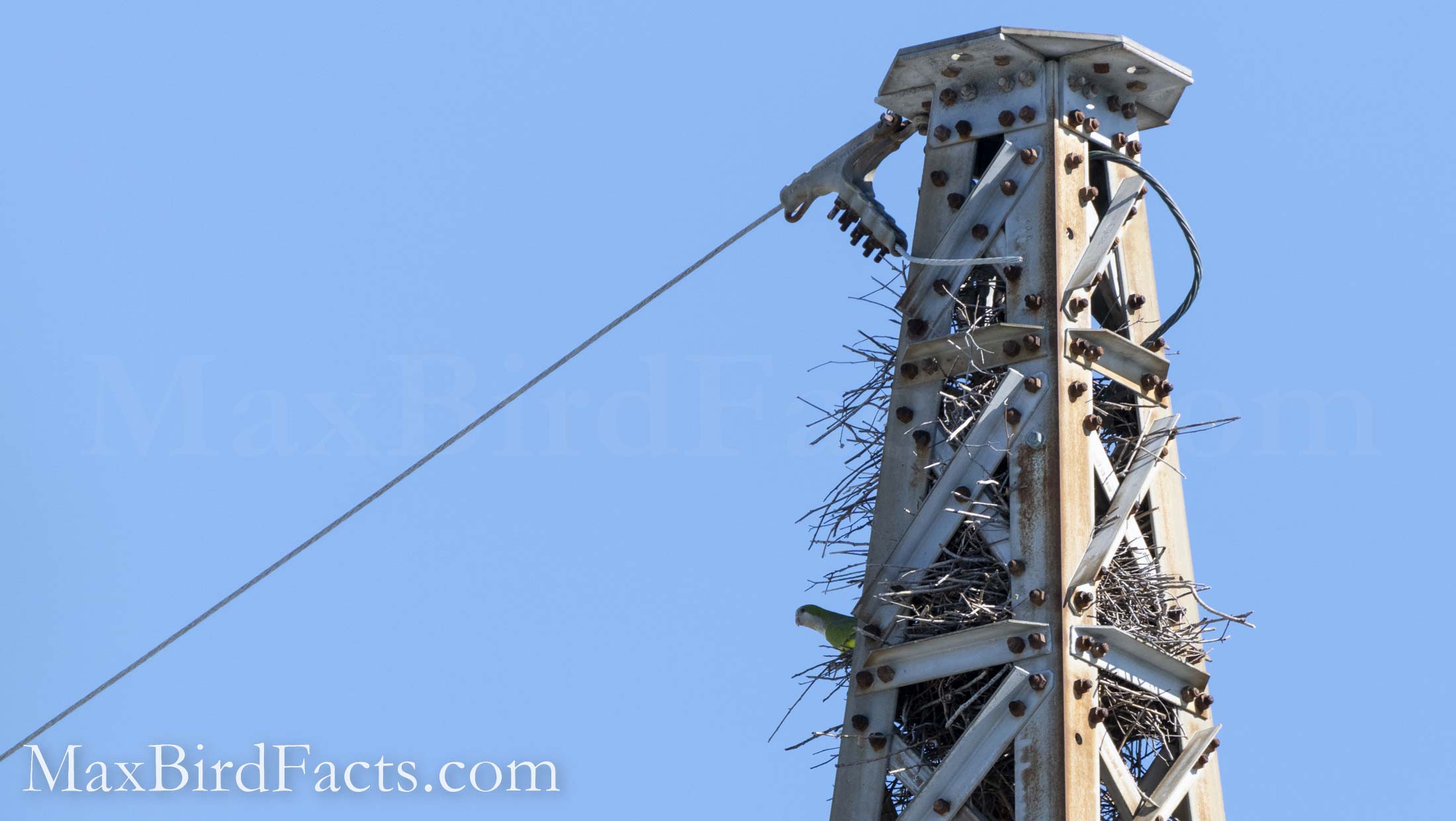
The adaptations that allowed them to stay successful in their native ranges clearly had untapped potential, which was eventually released onto the rest of the world due to their demand in the illegal pet trade.
As aforementioned, this criminal feather exchange bears a thin silver lining: the establishment of “feral” populations well outside these birds’ native ranges. This is both a blessing and a curse.
On the one hand, these populations help to increase the genetic diversity of the population as a whole, meaning the extinction of the species is less likely. These introduced parrots are typically in countries with stricter laws and regulations on capturing and harming these birds, making their recapture only allowed by professionals.
However, as I stated above, with the Red-crowned Parrots, these feral populations aren’t the same as their wild brothers and sisters. Likewise, the genome from these birds could eventually become so distant that the Red-crowned Parrots found in South Florida might ultimately be separated into their own subspecies or potentially a new species altogether.
Trying to repopulate the original wild habitat with these non-residents could be just as tricky as rebuilding wild populations of parrots using only pure-breed birds.
Sometimes, the species we classify as “invasive” or “non-native” can still have a place in these new ranges. Truth be told, Florida was home to a very widespread parrot until the early 20th century, the Carolina Parakeet, and we can only take on the sole responsibility for its extinction.
The First Wild Parrot In Florida
The Carolina Parakeet (Conuropsis carolinensis), the only genuinely native North American parrot, was plentiful from the southern tip of Florida to the Mississippi River delta of Louisiana, north to the Atlantic coast of New York, and the Great Lakes of Wisconsin, and even the eastern foothills of the Colorado Rocky Mountains. As a result, this parakeet was one of the most successful and widespread species of Psittacines found anywhere in the world, where even John James Audubon recounted several hundred of these boisterous birds in his famous book Birds of America.
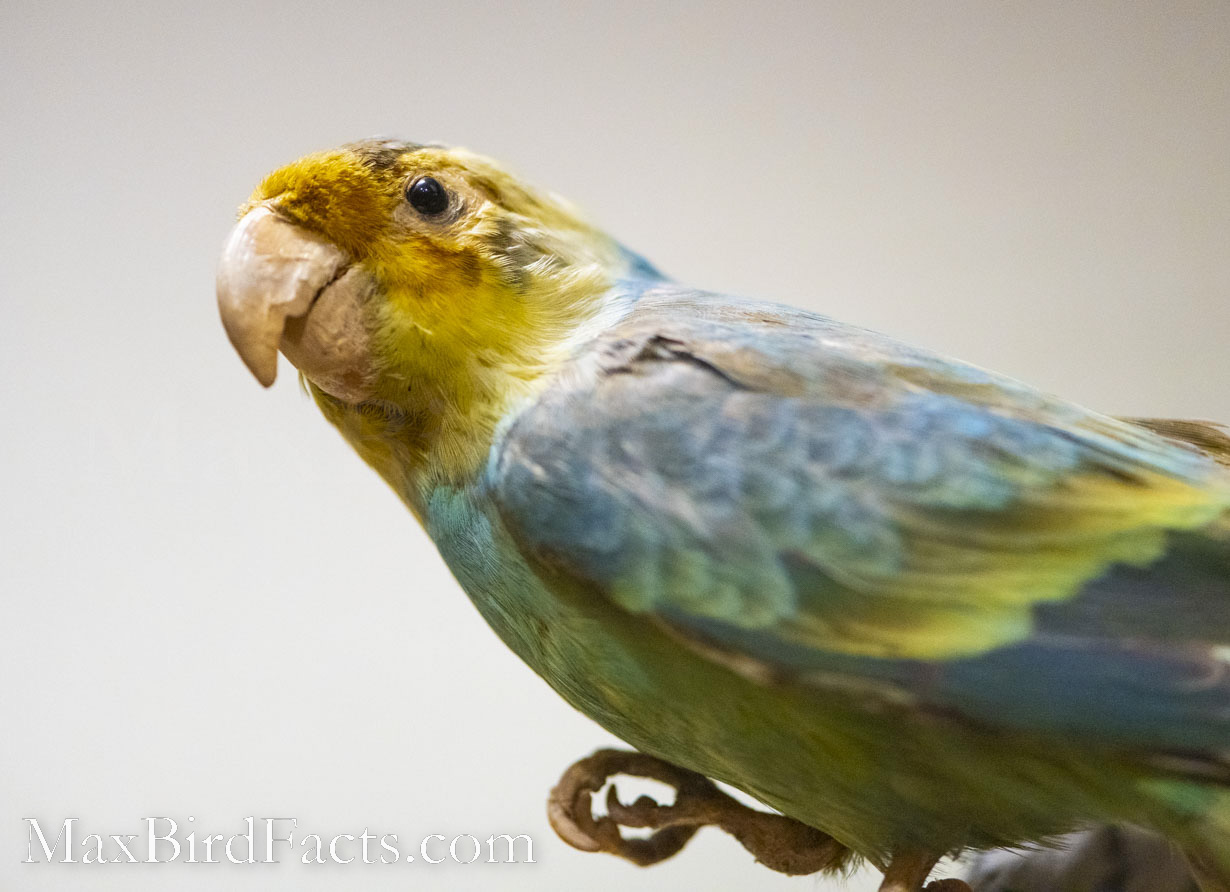
However, even in Audubon’s time, these birds were in steep decline due to habitat destruction and their unwarranted slaughter. Audubon himself wrote, “The living birds, as if conscious of the death of their companions, sweep over their bodies, screaming as loud as ever, but still return to the stack to be shot at, until so few remain alive, that the farmer does not consider it worth his while to spend more of his ammunition.”
It truly breaks my heart to know that these brilliant little parrots were so common across nearly the whole country, just to be blown out of the sky by farmers considering them nuisances. Regardless, by 1904 the last wild Carolina Parakeet was shot and killed in Okeechobee County, Florida, presumably for the hunter to prove these birds were still found in the wild.
These mass cullings weren’t saved just for the little American parrots. The Passenger Pigeon (Ectopistes migratorius), Heath Hen (Tympanuchus cupido cupido), Great Auk (Pinguinus impennis), Labrador Duck (Camptorhynchus labradorius), and Ivory-billed Woodpecker (Campephilus principalis) all meet the same fate as the Carolina Parakeet in the late 19th and early 20th centuries. Like nearly all other continents, North America saw the loss of many native avian species and a sharp decline in those that remained.
Thankfully, through the writings and illustrations of John J. Audubon’s Birds of America, the 234 million acres of protected land granted by President Theodore Roosevelt from 1901 to 1909, and the Migratory Bird Treaty signed in 1916 between the US and Canada, North American birds began to see the light at the end of a long and tumultuous road.
Maybe this loss of the Carolina Parakeet has allowed their southern cousins to do so well, at least in a small part. In fact, it would be hard to imagine these native parrots didn’t leave an unoccupied niche after their disappearance.
And, maybe one day, the parrots and parakeets we deem invasive today will become so well incorporated into our current ecosystems that they replicate the success of their fallen kin.
Treasure The Wild Parrots In Florida!
Now we better understand why there are wild parrots in Florida. With our subtropical climates, a tremendous array of ecosystems and biomes to choose from, and an abundance of food, Florida is the perfect place for refuge parrots to call home.
We may have lost our native Carolina Parakeets, but nearly two dozen of their South American and African cousins fly in North American skies today. These adaptive, clever birds thrive well outside their natural ranges and habitats, and we should celebrate this monumental triumph!
I hope you learned something new about these fantastic avians from this article. And if you are planning a parroting trip to South Florida, I hope you find some lifers!
A big special thank you to Kayla for helping me spot and list the majority of these stunning parrots.
If you have ideas or suggestions for topics you would like me to write about in the future, feel free to leave a comment below or shoot me an email!
Get Outside & Happy Birding!!!
Max
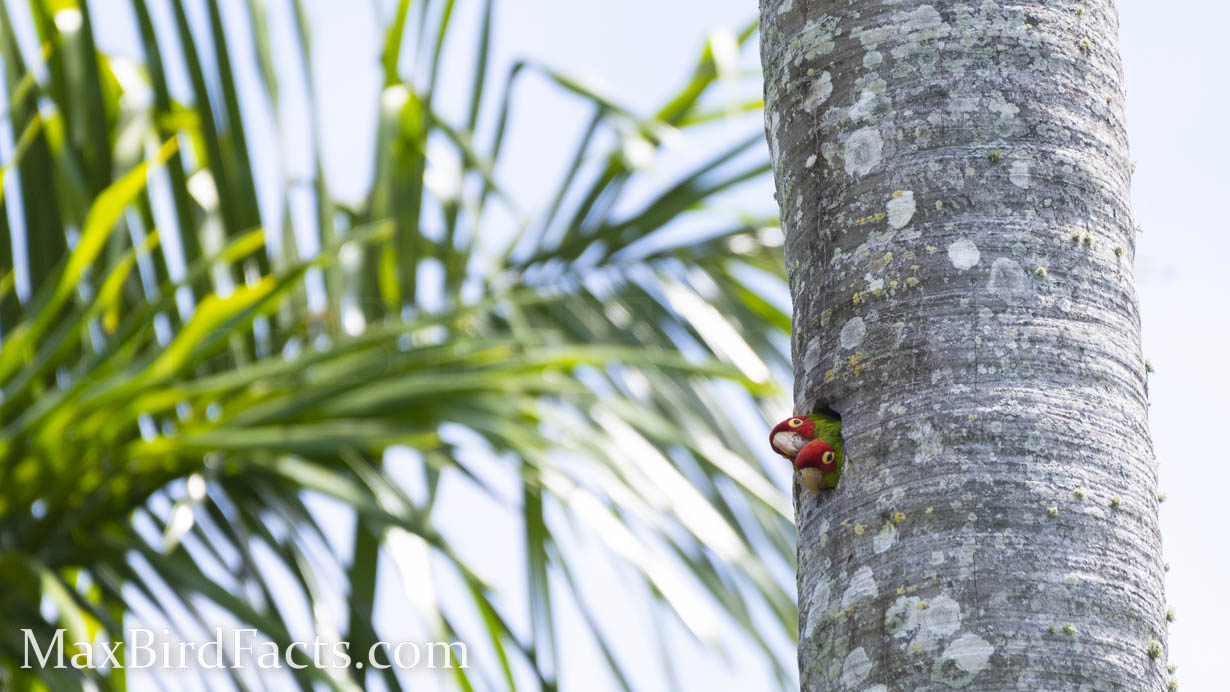
Discover more from Welcome to MaxBirdFacts.com!!!
Subscribe to get the latest posts sent to your email.
